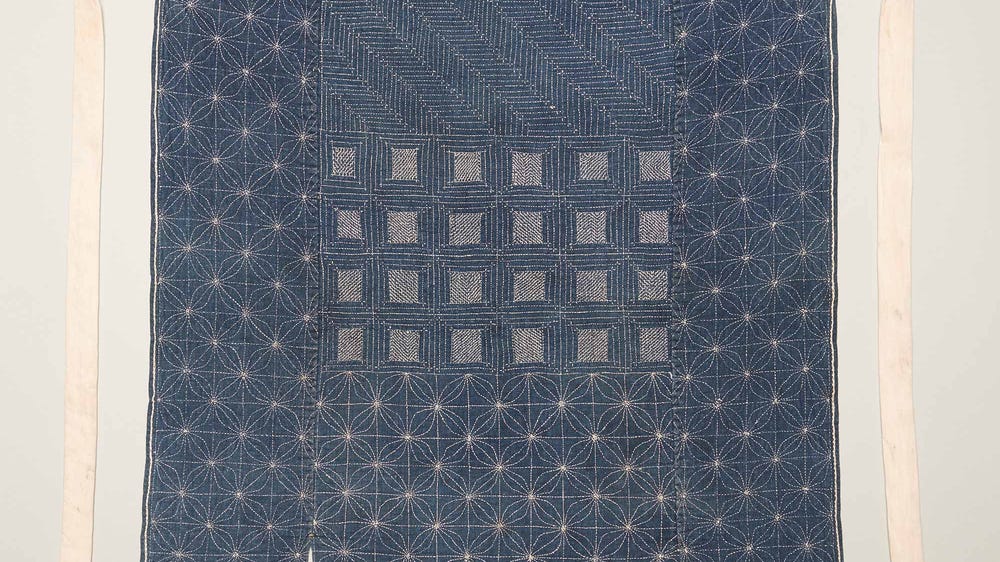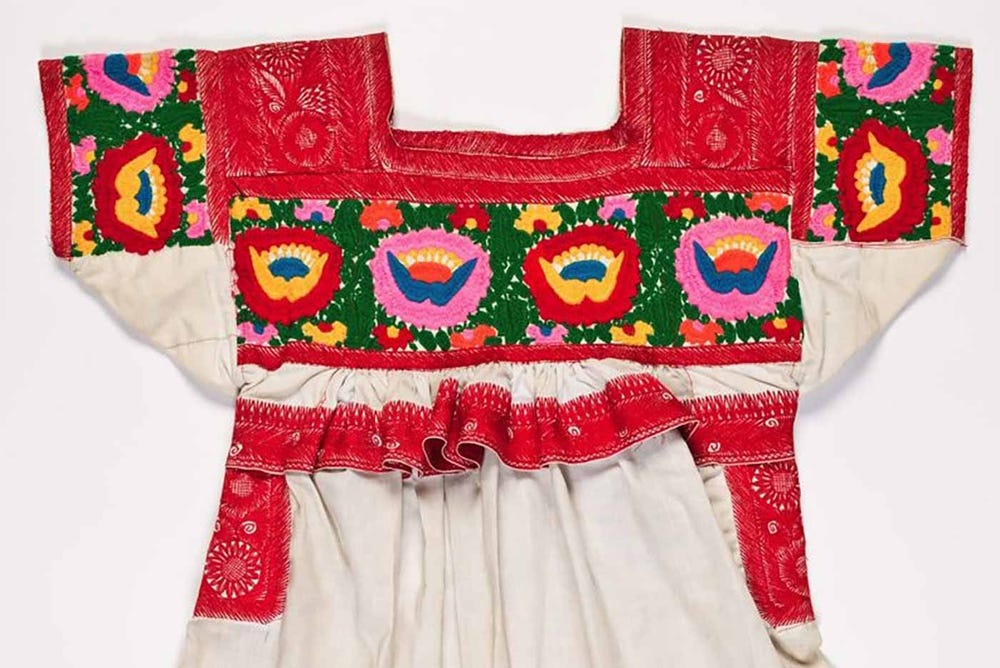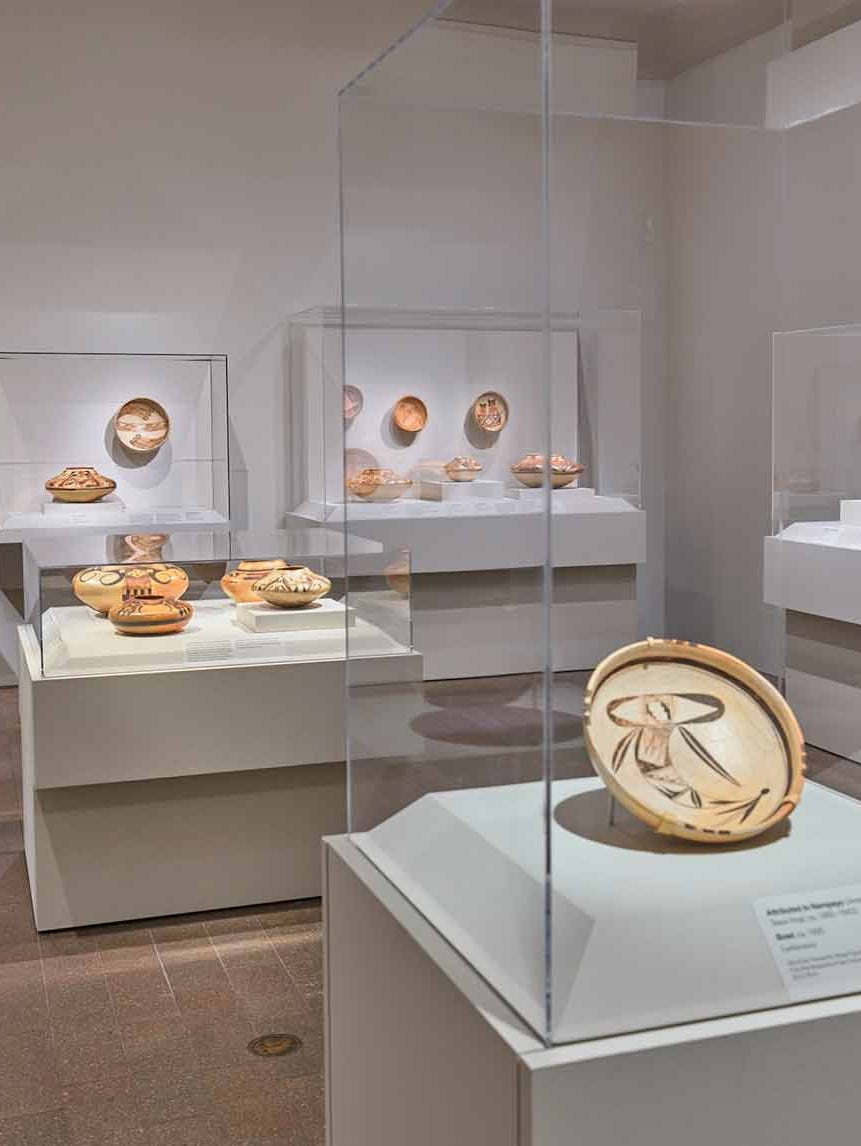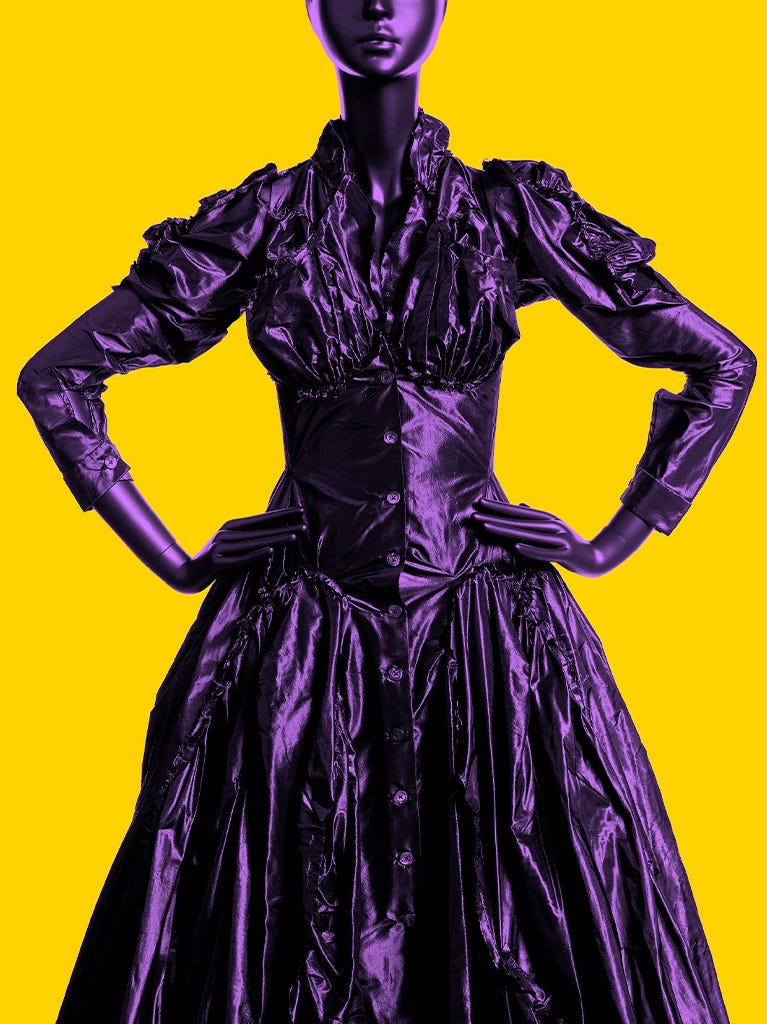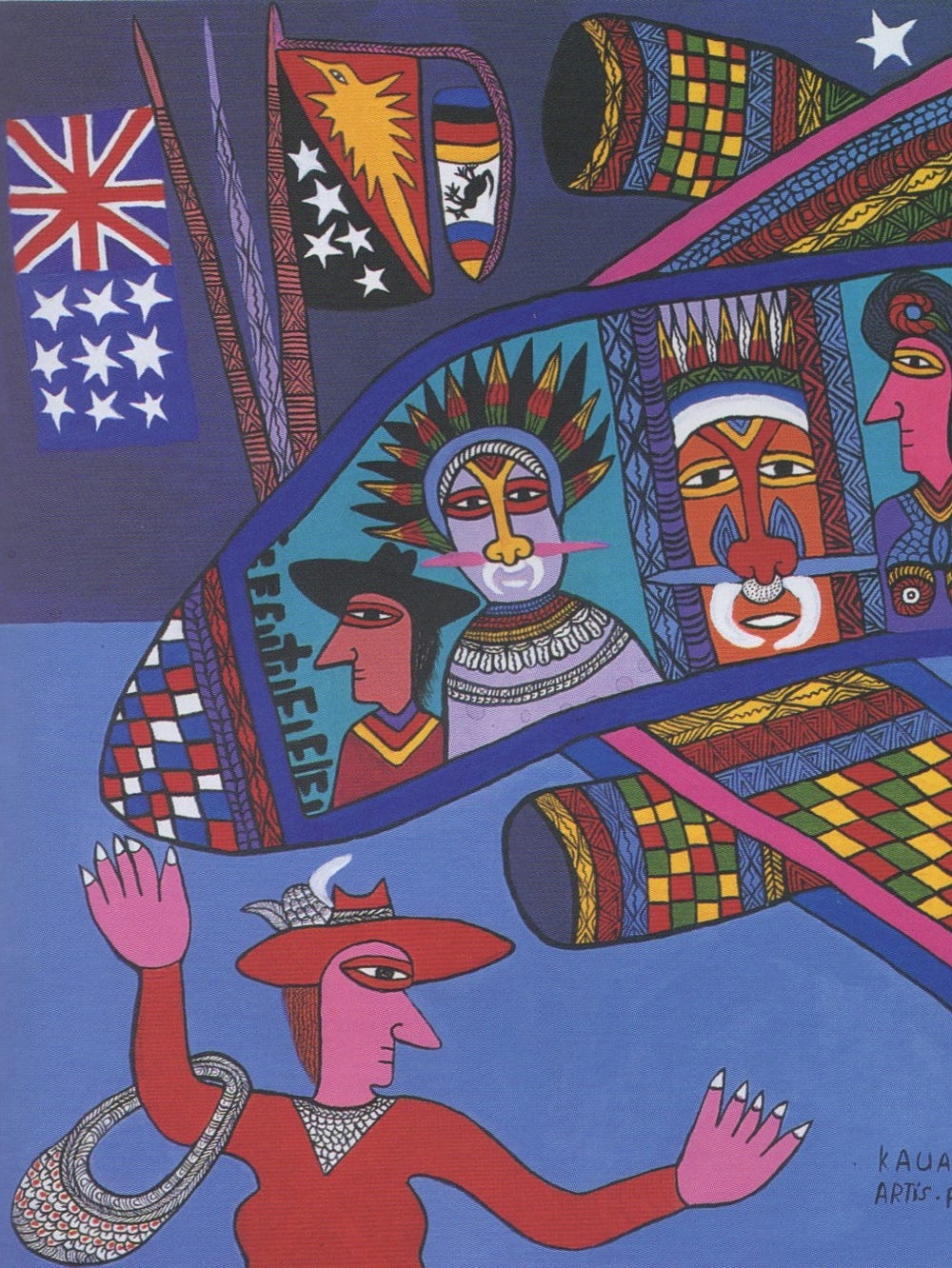Apron (maekake), ca. 1900, Japan. Cotton; indigo dyed plain weave, embroidery (sashiko and chain stitches). Gift of Susan York, 2016.37
Beyond the Surface: Worldwide Embroidery Traditions
Jump to
Beyond the Surface: Worldwide Embroidery Traditions presents a selection of embroidered costumes and accessories from around the world to explore their distinguished craftsmanship and unique social and cultural connotations.
Embroidery — the stitching of patterns in cloth with a needle and thread — has embellished costumes and textiles for centuries. While embroidery stitches may be purely decorative, they may also aid in a textile or garment’s construction, such as to outline a pattern or design or to reinforce a fabric or edge. Embroidered designs and their distinctive stitches, threads, patterns, and colors also often reflect the unique identity of their maker or wearer as well as the culture’s shared—and sometimes shifting — mores and traditions.
Embroidery stitches, of which there are many different kinds, derive from three basic types: flat, knotted, and linked and looped. Flat stitches, such as running and satin stitches, are individual stitches that lie atop a fabric’s surface and are made without crossing or looping the thread. Knotted stitches, where the thread is knotted upon itself, are used to create raised patterns and textures. Linked and looped stitches, such as chain, are formed by securing a stitch with the following one and are used to create bands of embroidery.
This exhibition is presented as a complement to the special exhibition The Summer of Love Experience: Art, Fashion, and Rock + Roll, emphasizing that global textiles and embroidery traditions were profoundly influential on the creative output of the 1960s counterculture.
